Nokia 9 PureView: Hands On, Impressions, Thoughts
by Anton Shilov on March 1, 2019 12:00 PM EST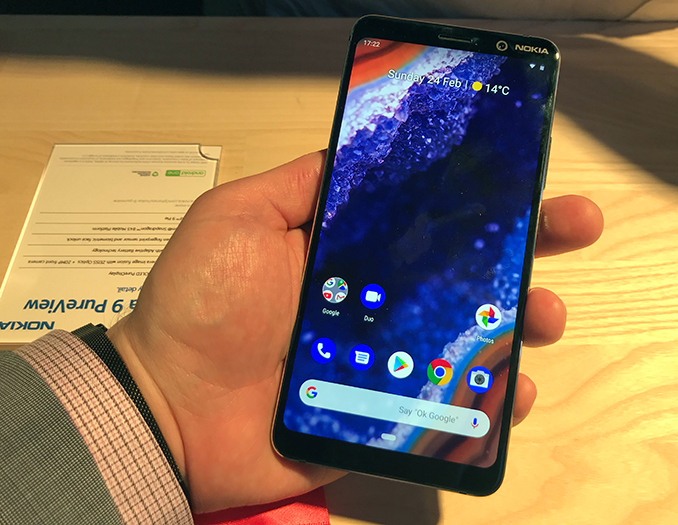
Earlier this week at Mobile World Congress, HMD Global introduced its new top-of-the-range Nokia 9 PureView smartphone. The new handset brings in a unique camera featuring six modules (five RGB/monochrome sensors, and Time-of-Flight sensor) co-designed by Nokia, Light, and Zeiss, coupled with Nokia’s latest photography software. As the technology behind the phone was explained in our initial coverage, this piece will focus on design, comfort of use, and overall impressions about the handset.
The Design
As we noted in our original coverage, the Nokia 9 PureView uses a pretty typical smartphone body design of a 6000-series aluminum skeleton paired with Corning’s Gorilla Glass 5 on both sides. The frame of the phone is further rounded on the sides with chamfered, diamond-cut edges. Unlike the Nokia 8 Sirocco, the Nokia 9 PureView does not use a display that is curved along the side bezels of the device, but instead uses a “classic” flat pOLED 5.99-inch screen that offers a 2880x1440 resolution and includes an in-display fingerprint scanner.
The N9P will be available in only one color: an almost black "deep blue". The color of the Nokia 9 PureView is meant to emphasize the device's position at the top of Nokia’s lineup, and it does manage to do this thanks to its fantastic looks. While the seven-element camera design gives the phone a very industrial appearance, the colour of the phone does give it a much more approachable feel.
The Hands-On
According to Nokia/HMD, one of the reasons why the company decided to go with rounded edges on the Nokia 9 PureView's – rather than the trapezoid-like design of the Nokia 8 Sirocco – was to improve user comfort when taking pictures. The phone has a very comfortable in-hand feel, and the diamond-cut edges of the handset allow for a very firm grip on the phone when taking photos.
The Nokia 9 PureView is based on Qualcomm's now last-generation Snapdragon 845 SoC. Nokia's choice in SoCs puts the phone a bit behind the ball in terms of flagship performance, but given that the phone is clearly being built around its camera capabilities first and foremost, it's not too surprising a choice (especially as this first-gen products typically take longer to come to market). And in any case, although SD845 is no longer the king of the hill in Android SoCs, it can put up good numbers and keep things running smoothly.
Meanwhile the interface of the camera software was adjusted avoid accidental switching from one mode to another, which sometimes happens on other phones during intensive usage. Along those lines, Nokia has been ensuring that third party software works with their camera system as well, telling us that both Adobe Lightroom CC and the Google Photos already "know" how take advantage of the advanced six-module camera.
As an aside, even though Nokia is taking care to support Lightroom CC (and to publicly mention doing so), I was a bit surprised to find out that Lightroom CC itself is not pre-installed. This, as it turns out, is because the company is looking to avoid pre-loading unessential software on its phones.
In general, the Nokia 9 PureView feels like a great phone that promises to shoot pictures of excellent quality in all weather and lighting conditions, which is of course its key feature. Getting there means that Nokia has made some design trade-offs – such as the aforementioned SoC choice and even the decision not to include a 3.5-mm audio jack – but as high-end smartphones have increasingly become homogeneous, it’s nice to see someone experimenting by going in a different direction.
The Gallery
Due to lack of time and consistent access to the Nokia 9 PureView hardware, it was impossible for us to try out its camera in real-world conditions. As a result, all we can share are images shot on the Nokia 9 Pureview as distributed by Nokia.
The New “Nine”
Without any doubts, we liked the Nokia 9 PureView. What we especially like is that that it is not a an ideological successor of the original 9-series. Here is why:
If we recall Nokia’s traditional model naming concept (which was described here), the 9-series phones were positioned as the company’s most advanced handsets from technology standpoint. The first Nokia 9000 Communicator phone was introduced at CeBit 1996, and to a large degree we may think of it as about the grandfather of today’s smartphones. The device featured a QWERTY keyboard in a horizontal clamshell design, a display with a 640x200 resolution, a web browser, a variety of business applications, among other capabilities that have greatly evolved since then.
Being aimed at business users, the Communicator featured a very strict design that was hardly attractive to general audience, and could probably startle the fashion-minded crowd (which used their Nokia 8-series phones). The price and the looks clearly made the Nokia 9-series Communicator a very niche product. The last Nokia 9300 Communicator was launched in 2004, two years later it was replaced by the Nokia E61 smartphone with a QWERTY keyboard.
In all, I feel that the Nokia 9 PureView represents a high-water mark for HMD Global has in terms of hardware and software. It is not exactly a successor to the classic Nokia 9-series (it is positioned rather differently), but the high-tech nature of the device is evident. So the biggest question facing the phone, I suspect, is not going to be about specs or build quality (or even style), but rather whether the demand exists in the consumer market for such a camera-heavy phone. Thus far Apple has definitely made a name for themselves in this field with their most recent iPhones, and HMD seems primed to take that one step further.
Related Reading:
- Nokia Launches Nokia 9 PureView at MWC 2019: So I Heard You Like Cameras
- Nokia 8.1 Unveiled: Elegant Phone with 6.18-Inch Display, 20MP Selfie Cam, Zeiss Optics
- Nokia 7.1 Smartphone Launched: 5.84-Inch ‘PureDisplay’, Zeiss Optics
- Hands-On With the Nokia 8 Sirocco: Reviving Nokia's 'Dream Phone' Concept


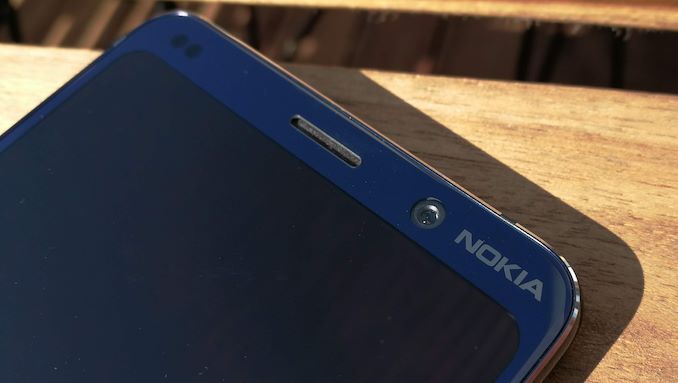
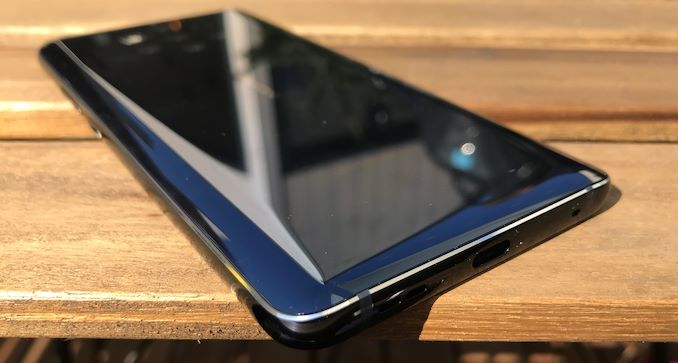
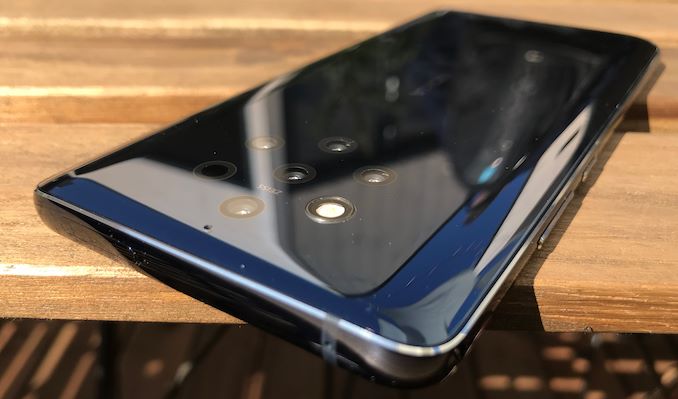






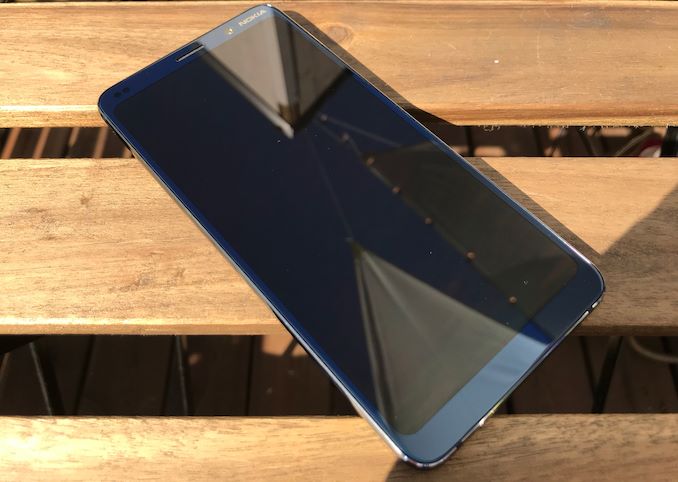









34 Comments
View All Comments
s.yu - Saturday, March 2, 2019 - link
GSM Arena has real samples.phr3dly - Friday, March 1, 2019 - link
I'm not one to harp on minor typos, but this article is riddled with typos and gibberish sentences to the point that it's painful to read. Did someone forget to copy-edit?"The diamong-cut edges of the handset also enable for a very firm grip, something that will be appreciated by the target audience of this device, such as for when taking pictures."
"Meanwhile the interface of the camera software was adjusted avoid accidental switching from one mode to another, which sometimes happens on other phones during intensive usage. Nokia says that the Adobe Lightroom CC and the Google Photos programs already 'know' how take advantage of Nokia’s advanced six-module camera. Meanwhile, the Lightroom CC is not pre-installed, which, as Nokia puts it, a part of the promise of not loading unessential software on its phones."
"Withiut any doubts, we liked the Nokia 9 PureView. What we especialled like is that that it is not a an ideological successor of the originial 9-series. Here is why:"
Devo2007 - Friday, March 1, 2019 - link
Not to mention even getting some technical terms wrong. It's a "Time-of-Flight" camera; not "Time-of-Light."Sadly, some of the editorial content has taken a turn for the worse here at Anandtech. Considering this is even barely a hands-on it's rather shameful to see quality this poor.
Arbie - Saturday, March 2, 2019 - link
All journos should use a spell-checker, especially given their presumed deadlines. That's simple and would help a lot.However, the other language errors here are few, and minor - mostly adding or omitting an article erroneously, as is typical with Russian speakers. You can reasonably insist that Anandtech should have a native English speaker smooth everything out, or take it for what it is - an excellent job by a non-native speaker. I'd prefer the former too, but find this quite acceptable in today's world. It certainly isn't "gibberish".
Plus IMHO Mr. Shilov has long since earned a little slack on this.
Ryan Smith - Saturday, March 2, 2019 - link
Thanks for the feedback. I've gone ahead and given it a good scrubbing.Jiggs82 - Friday, March 1, 2019 - link
Can you please upload the wallpaper?🤞🏼peevee - Friday, March 1, 2019 - link
A "top-of-the-range" phone with last year's SOC? Fail.What else is wrong with it really - slow RAM? Slow flash?
In 2019 device, at least 1 A76 must be on board. Or Samsung M3. Multi-threading can be served by A55s better, without going into power/thermal throttling where 4 A75s or A76s put any phone in a jiffy. Or being limited by memory or last level cache performance anyway, while wasting tons of power at high freq.
But single-threaded workloads better be served by a core as fast as possible.
Cliff34 - Friday, March 1, 2019 - link
I agree. Unless their pricing is below top of the range phones in 2019, they are not going to sell well. S10 already has gorilla glass 6. Why is Nokia stuck with using 5? The only thing I can see that make sense is if they don't price it as a premium phone.jabbadap - Saturday, March 2, 2019 - link
599€ here in Finland, which is cheap. To put it some perspective Sony Xperia XZ3 has the same SOC, screen resolution, less ram, less flash memory and costs 799€.eddman - Saturday, March 2, 2019 - link
It hasn't been confirmed, but it seems this phone was actually supposed to be released last year but got delayed. Instead of canceling the current model, they decided to release it with an 845 now and then release an 855 variant in Q3/Q4 this year.They are aware of the old processor and have priced it lower than the competing flagships. It's even cheaper than the S10e.